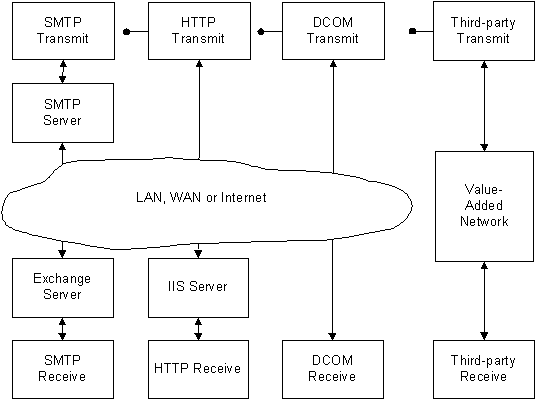CIP Transports
The Transport stage in the transmit pipeline contains components that prepare the working data for transmission and that transmit the data. This stage isolates the other components from the details of the actual transport protocol.
Currently supported transports include the following:
-
υDCOM. The SendDCOM component uses the Distributed Component Object Model (DCOM) to create a receive connector object on the remote computer over a LAN, WAN, or the Internet. The remote DCOM object then creates a Receive pipeline, passing the Transport Dictionary to the remote pipeline instance.
-
υSMTP. The SendSMTP component transmits the working data as an e-mail message, using a SMTP-based server. For this connector to work, a process, operating in conjunction with a SMTP server (a mail server like Exchange) must wait for and process messages as they arrive at the receive end.
-
υHTTP. The SendHTTP component transmits data using an HTTP post. At the receive end, a Web page processes the HTTP post message.
-
υCustom or third-party. Any transport mechanism can be used, including EDI translators with a network connection to a Value Added Network (VAN).
For example, in a transmit pipeline that uses the EncryptPKCS component, the transport component reads the value in the working_data name/value pair and transmits the data as HTTP, as e-mail, or by any other protocol.

For the transports previously defined, the format of the data sent over the transport can be one of the following:
-
υXML
-
υXML-wrapped binary COM object
-
υEDI
-
υAny third-party-supported formats
© 1997-1998 Microsoft Corporation. All rights reserved.

